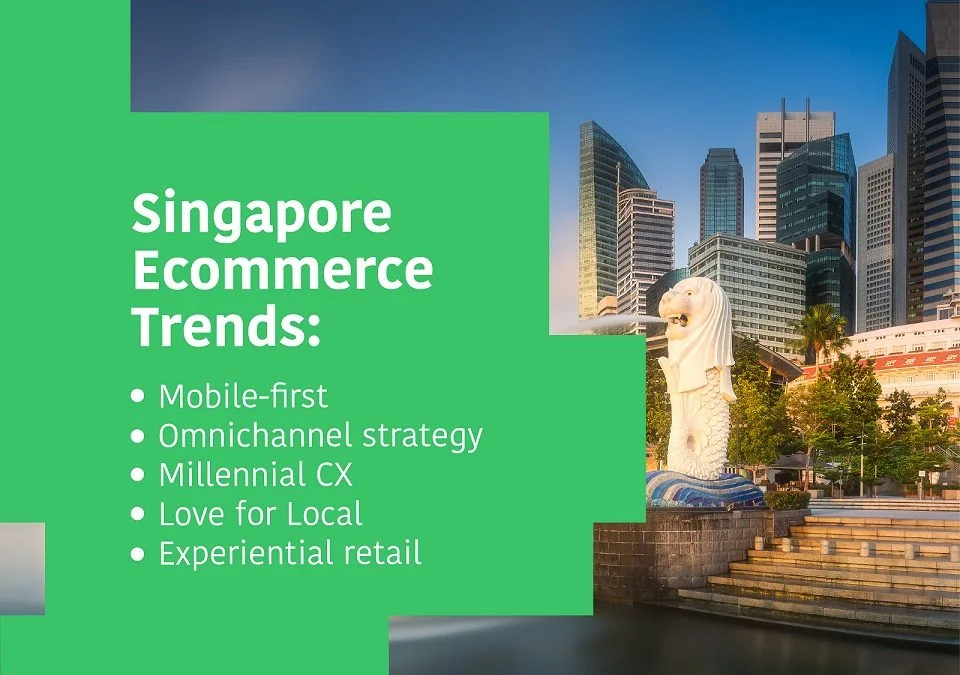- Design industry shaping loyalty programs
- Integrate easily and go live quicker
- Deliver hyper-personalized consumer experiences
Blue Rewards from Al Futtaim Group Shares Loyalty Success Stories and Evolution. Watch Podcast >
Capillary Announces 2nd Annual Captivate 2025 Summit: Transforming Loyalty Management with New AI Tech Read more >

Over the past two decades, e-commerce in Singapore has undergone a remarkable transformation, positioning the country as a leader in digital retail innovation. With its strong infrastructure, high internet penetration, and tech-savvy consumers, Singapore has created a thriving environment for online businesses to flourish. Even before the pandemic, the country saw a steady shift toward digital commerce, but the past few years have accelerated this evolution, forcing retailers to rethink their strategies.
Singapore has been no stranger to digital commerce. Even before the pandemic, the country saw a significant shift, with e-commerce Singapore driving a transformation in the retail landscape. As early as 2014, a survey by Visa indicated that Singaporeans were among the most active online shoppers in Southeast Asia, with 26% making weekly purchases and nearly half considering a complete transition to online shopping.
The nation’s high internet penetration—standing at around 88%—coupled with seamless digital payment adoption, made online shopping the preferred choice due to convenience, competitive pricing, and efficient delivery services. The surge in e-commerce in Singapore during the pandemic further solidified its role in the economy, proving that businesses with an online presence had a clear advantage.
With this strong foundation in place, retailers must now keep pace with the evolving trends that are defining e-commerce in Singapore. Here’s a look at five key trends shaping the industry.
With a younger, tech-savvy population, mobile commerce is at the forefront of e-commerce trends in Singapore. Retailers are increasingly optimizing mobile-friendly experiences to enhance engagement and improve conversions. Looking to up your customer engagement game? Check out Capillary’s Engage+.
A prime example is Shopee, one of Singapore’s leading e-commerce platforms, which launched in 2015 and rapidly expanded across Southeast Asia. The platform thrives on mobile-first interactions, leveraging features like influencer-driven livestream shopping and personalized promotions to attract younger consumers.
A recent study by Qualtrics, supported by the Singapore Economic Development Board, indicates that customer satisfaction in Singapore has improved over the past year. The country’s average Net Promoter Score (NPS) increased from +4 to +9, reflecting enhanced customer sentiment. Despite this positive trend, 24% of consumers reported having lodged complaints, highlighting ongoing opportunities for e-commerce Singapore businesses to further enhance customer interactions, potentially through the implementation of AI-driven tools.
For instance, Carousell, a prominent secondhand marketplace, integrates AI-powered chatbots to anticipate customer needs, providing quick and relevant solutions. Businesses leveraging loyalty program software can further enhance customer satisfaction by personalizing offers and recommendations based on shopping behavior.
Even pre-pandemic Singapore witnessed many traditional brick-and-mortar stores being closed. Covid had accelerated these closures. Omnichannel retail can thus play a role in bringing these stores back to life. Stores can act as a pick-up point for ‘click and collect’ models where customers can buy the goods online and collect them at a convenient location of their choice.
RedMart, an online supermarket arm of the Lazada group is one of the top grocery shopping platforms in Singapore. RedMart has introduced many innovative strategies to ensure a seamless experience for consumers. For example, the platform records and automatically saves delivery preferences and commonly purchased items, leading to convenient shopping for the customer and higher conversion rates for the retailer.
Singaporeans are increasingly gravitating toward local businesses, a trend accelerated by the pandemic. According to The Straits Times, this shift stems from a desire to support regional brands and contribute to economic recovery.
Fashion e-retailer Zalora has successfully capitalized on this trend by partnering with local designers and brands. Through its marketplace, Zalora enables independent merchants to showcase their products while simultaneously providing curated fashion and lifestyle content to its audience.
While e-commerce is booming, retailers are now focusing on immersive experiences to attract shoppers back to physical stores. This approach prioritizes engagement over transactions, with brands introducing augmented reality (AR), interactive digital mirrors, and personalized shopping experiences.
Bath & Body Works, a brand under the Valiram Group, successfully expanded its digital presence in Singapore during the pandemic. Using Capillary’s loyalty software, the company streamlined its e-commerce operations while maintaining a seamless customer experience.
Over the past two decades, e-commerce in Singapore has undergone a remarkable transformation, positioning the country as a leader in digital retail innovation. With its strong infrastructure, high internet penetration, and tech-savvy consumers, Singapore has created a thriving environment for online businesses to flourish. Even before the pandemic, the country saw a steady shift toward digital commerce, but the past few years have accelerated this evolution, forcing retailers to rethink their strategies.
As e-commerce trends in Singapore continue to evolve, businesses must stay ahead by embracing cutting-edge technologies, optimizing customer experiences, and leveraging loyalty program software to drive engagement. In this blog, we explore five major trends shaping e-commerce in Singapore and how brands can adapt to meet changing consumer expectations.
Singapore’s e-commerce landscape is evolving with trends like mobile-first shopping, AI-driven customer experiences, omnichannel strategies, and the rise of local brands. Businesses are also leveraging loyalty program software to boost retention.
E-commerce in Singapore stands out due to its high internet penetration, strong digital infrastructure, and tech-savvy consumer base. The market also embraces innovations like AI-powered personalization and advanced loyalty software.
Loyalty software helps e-commerce businesses in Singapore build stronger customer relationships by offering personalized rewards, exclusive discounts, and AI-driven engagement strategies, ultimately increasing repeat purchases.
Loyalty program software enables brands to enhance customer retention, provide seamless omnichannel experiences, and analyze consumer behavior for better engagement, which is crucial in Singapore’s competitive e-commerce landscape.
To succeed in e-commerce Singapore, businesses must adopt mobile-first strategies, implement AI-driven personalization, utilize loyalty software for customer engagement, and embrace omnichannel retail to bridge online and offline experiences.

December 1, 2024 | 7 Min Read
Over the past two decades, e-commerce in Singapore has under

June 24, 2020 | 4 Min Read
Singapore has been hailed in the global community for the qu